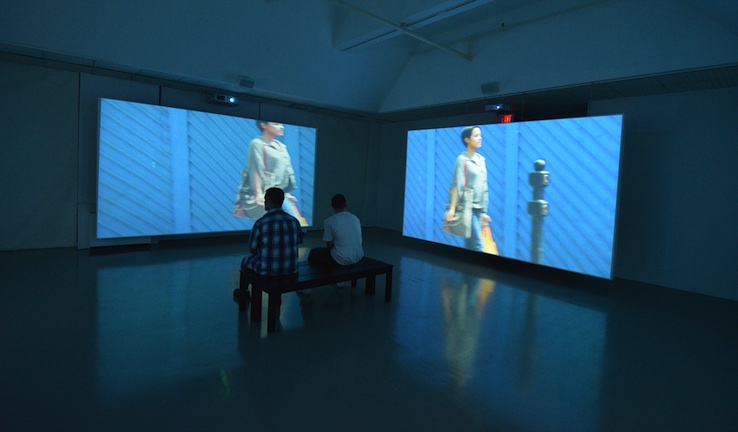Regional arts organizations find ways to keep afloat
A clearer picture is beginning to emerge of the challenges southwestern Pennsylvania’s arts and cultural organizations faced to survive the economic instability of recent years and how they managed to remain a vital regional asset. Four in 10 dealt with annual deficits, and more than a third lost subscribers. Most redoubled efforts to cultivate new donors and develop their audience. And many revisited strategic plans and took other steps likely to pay long-term dividends.
“Many organizations had to reexamine what they were doing and how they were doing it,” said Mitch Swain, chief executive officer of the nonprofit Greater Pittsburgh Arts Council, which helps arts organizations expand their reach, influence and effectiveness. “It was hurtful that we lost some employees. But rethinking your marketing strategy, finding ways to be more effective and forcing yourself to learn how low-cost social media can work for you are good things.”
The seven-county Pittsburgh Metropolitan Statistical Area is home to 486 arts and cultural organizations large and small, according to Greater Pittsburgh Arts Council 2010 accounting. Some 350 of them are located in Allegheny County.
Even as the region climbed out of recession, 42 percent of arts organizations were experiencing annual deficits, according to a 2010 Arts Council survey, the latest data available. Another 42 percent reported breaking even. Only 9 percent expected their finances to improve in the next year.
The survey also suggests that as many as 34 percent of arts organizations lost subscribers, while memberships and subscriptions increased for 17 percent and stayed the same for the rest. About one in five saw overall attendance fall somewhat that year and 36 percent reported it stayed the same. Another 21 percent of organizations experienced an increase.
Smaller arts organizations are the most vulnerable during economic downturns. In southwestern Pennsylvania, 60 percent of nonprofit arts and cultural organizations operate with annual budgets under $250,000, which is considered small. Few such organizations have endowments to rely on and most don’t have much in the way of a cash reserve.
“They get squeezed hard,” Swain said. “They depend on small amounts of money from many different sources and are able to make those investments go a long way. But as support has decreased over the last couple of years – government support, particularly – it’s been more difficult for them to maintain capacity, maintain programming, be willing to take risks. It also makes it harder for new projects to emerge.”
And yet most of the region’s arts organizations, even those that on their best days operate on a shoestring, managed to survive the worst economic downturn in decades while sacrificing little in the way of quality. They did so a number of ways. Some trimmed a performance or two from their schedules, left vacant positions open or resisted hiring part-time help on a project. But their most pressing priorities included cultivating individual donors, audience development, corporate giving, building staff capacity and strategic planning, according to the Arts Council survey.
Necessary adjustments
The focus on individual giving is not surprising. Southwestern Pennsylvania arts and cultural organizations have long benefitted from strong and consistent foundation support, as reflected in Pittsburgh Today rankings that placed the Pittsburgh MSA third among 15 benchmark regions in per capita foundation giving in 2010. But it tends to lag other regions in individual donations.
There was encouraging news on that front in 2011 when arts organizations raised more than $1.4 million in individual donations and $475,000 in matching funds during the Pittsburgh is Art Day of Giving. The single-day Internet-based fundraising drive was sponsored by the Pittsburgh Foundation, based on a model that has been successful in boosting donations to a broad range of local nonprofits and steering them toward wider use of new technologies. Another arts-specific day of giving is scheduled for the fall of 2013.
The recent financial crunch, Swain said, “forced us to catch up with the times in many ways and to get better.” That includes organizations integrating social media and other technologies into their day-to-day operations to accommodate a growing number of patrons who rely on their computers and smart phones to shop, donate and get information.
Arts organizations across the nation have embraced technology with a vengeance, according to a recent study by the Pew Research Center, a subsidiary of Pew Charitable Trusts. Nearly all arts organizations have websites and 97 percent have a social media presence on Facebook, Twitter, YouTube and others. Tickets are sold online by 72 percent of organizations and 86 percent take donations online, the study reports.
RAD concerns
Another local financial lifeline is money from the Regional Asset District’s half of the revenues generated by a 1 percent Allegheny County sales tax. Arts and cultural organizations expressed concern over the future of those funds last year after the RAD board approved a record $89.7 million budget for 2013 that included $3 million for the cash-strapped Port Authority transit system. Until then, RAD funds had been limited to supporting parks, libraries, stadiums, the David L. Lawrence Convention Center, and arts and cultural organizations.
Higher sales tax revenues and the willingness of RAD to dip into its reserves enabled the board to give the Port Authority money without cutting funds to other organizations. In fact, some arts and cultural organizations saw an increase in funding. But what the future holds is unclear.
The Port Authority grant helped Allegheny County uphold its end of a deal that delivered additional state transportation dollars to plug a gap in the local transit system’s budget and temporarily avoid a 35 percent cut in bus and train service. “We recognize the importance of transit. It supports getting our employees to work and getting people to events,” Swain said. “Our larger concern is that this will become a long-term situation.”





